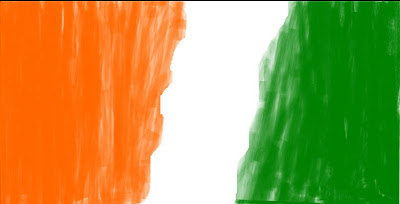The majority of our feelings and intentions are sent through nonverbal communication. Moreover we tend to search for signals when verbal messages are unclear or ambiguous.
Why important? - Because nonverbal communication has also cultural meanings and is being interpreted according to the cultural context it occurs. Cultural norms regarding kinesics vary considerably between countries; if you are not familiar with the local body language you might be misunderstood, and sometimes misinterpret the local nonverbal signals.
This can certainly lead to embarrassing and uncomfortable situations. To avoid these situations, I am bringing you a very basic set of gestures. Which I have learnt through a little (or more) of embarrassment!!
Let’s have a look at the basic gestures in India and in France.
India
 1. Greet
1. Greet
Greeting with 'namaste' - placing both hands together with a slight bow is a very common nonverbal communication and shows respect for Indian customs.
You can also shake hands; Men may shake hands with other men and women may shake hands with other women. There are seldom handshakes between men and women because of religious beliefs. If you are uncertain, wait for them to extend their hand.
2. Public displays of affection are not proper.


3. Side to side head/hand wave is frequently interpreted by Indians as "no".
4. Up and down head wave is frequently interpreted by Indians as "yes".
5. Use your right hand only to touch someone, pass money or pick up merchandise. The left hand is considered unclean.
6. When an Indian answers, "I will try," he or she generally means "no." This is considered a polite "no."
7. Pointing a finger at someone would be considered rude.
8. Don’t blow your nose at the dining table
9. In India, persons of the same gender have close physical contact with their friends.

France

1. Greet
- In India, publicly kissing is not appreciated, while in France greeting friends and family starts with an exchange of kisses (cheek-to-cheek kiss or peck ). However the number of kisses and the side that the kisses start on vary by region.(1,2,3 or 4)
- The French shake hands upon meeting someone for the first time, particularly in the business world.

2. Counting
When using the fingers to count the thumb is the first counter, the index finger is two, the mi ddle finger is three, etc. If you hold up two fingers (index + middle fingers), you'll get three of whatever you're ordering, not two. Because the French count the thumb even if you don't hold it up.

3. Are you Crazy?
(Laurence Wylie - professor of French Civilization)

4. I don’t believe you
To express your disbelief at what someone is telling you, put your index finger and pull down the skin under your eye and say, "Mon œil !"
This is equivalent to the English expression "My foot!"

5. OK
The "okay" sign, made with index finger and thumb, means "zero." The French use the "thumbs up" sign to say "okay."

6. It’s finished / Stop
To indicate that you don't want to continue whatever you are doing, cross your arms in front of your chest, hands up and palms out, then swing them down and out.
7. Almost
In order to indicate that what you are saying (the time you'll arrive, how long something will take, etc.) is just an estimate, hold out your hand, palm down and fingers spread, and wobble it back and forth.

8. Want to sleep or Someone asleep
This gesture has two meanings. It can indicate someone
• who is tired and wants to go to sleep, or
• who is asleep and shouldn't be woken up
Join your hands, place them on your shoulder, rest your cheek on them, and (optionally) close your eyes.
9. In France, during conversations, be especially careful about interrupting (let person finish his statement, before you start yours) - Listening is a sign of politeness and of contemplation.
10. In France, when two persons (of same or opposite gender) walk hand in hand or hug publically then they are considered as a couple/lovers. Its not even common for any family members or friends to walk in street hand in hand.
11. Burping is considered very bad in France (equivalent to farting)















